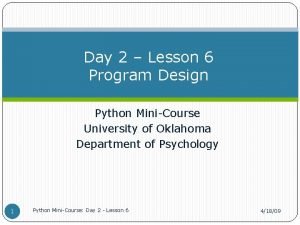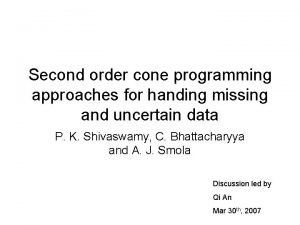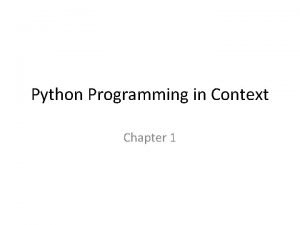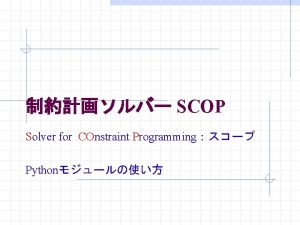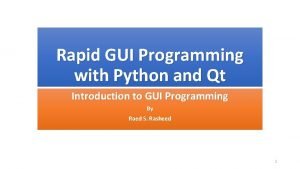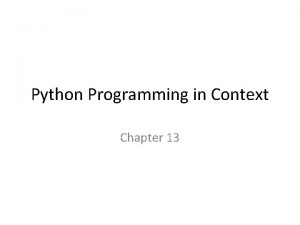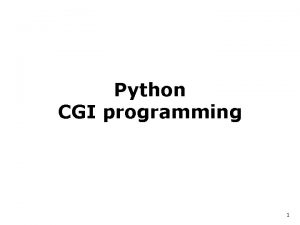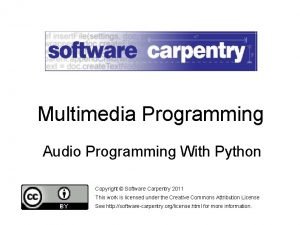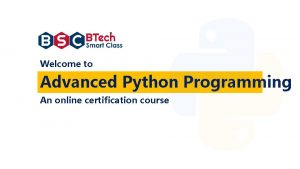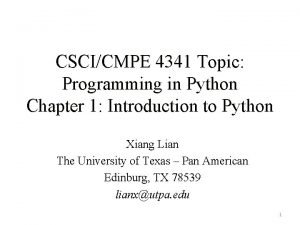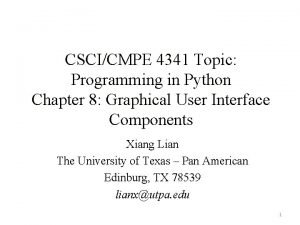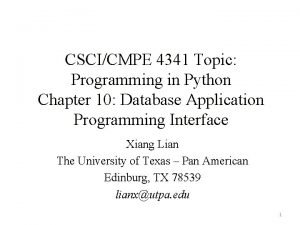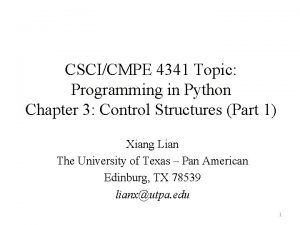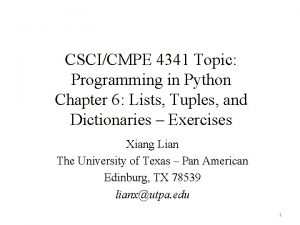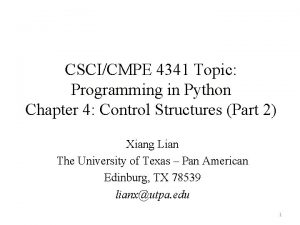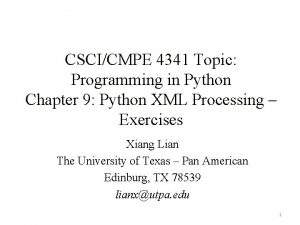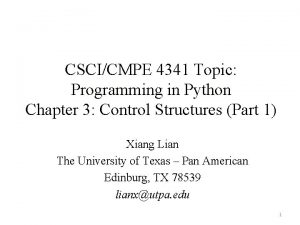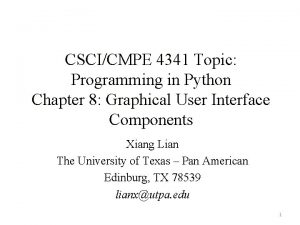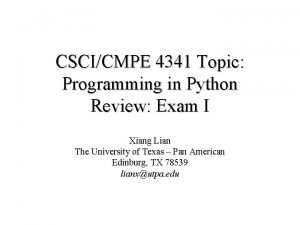CSCICMPE 4341 Topic Programming in Python Chapter 5











- Slides: 11

CSCI/CMPE 4341 Topic: Programming in Python Chapter 5: Functions – Exercises Xiang Lian The University of Texas – Pan American Edinburg, TX 78539 lianx@utpa. edu 1

Objectives • In this chapter, you will do some exercises about: – Functions in Python 2

Multiple Choices • Constructing a large program from smaller components is called ______. – A. object-oriented programming B. algorithm design – C. divide and conquer D. writing pseudo-code • "Pre-packaged" functions or classes are available in Python ______. – A. functions B. classes C. modules D. packages • The ______ module functions allow programmers to perform common mathematical calculations. – A. random B. built-ins C. math D. iostream • The indented statements that follow a ______ statement form a function body. – A. void B. int C. def D. None of the above • The ______ module introduces the element of chance into Python programs. – A. rand B. math C. random D. cmath 3

Multiple Choices (cont'd) • A function ______ produces pseudorandom numbers. – A. Math. random() B. math. random. Num() – C. random. Randomrange() D. random. randrange() • During the code execution, three namespaces below can be accessed except for: – A. local namespace B. global namespace C. nested namespace – D. built-in namespace • A method that calls itself either directly or indirectly is a(n) _____method. – A. static B. dynamic C. public D. recursive • A recursive function converges on the _____. – A. initial case B. base case C. procedure that calls itself D. procedure that calls other functions 4

Multiple Choices (cont'd) • Which of the following statements generates a random number between 1 and 4 (inclusive)? – A. random. randrange(0, 4) – B. random. rand(1, 5) – C. random. randrange(1, 5) – D. random. randrange(0, 4)+1 5

True/False Statements • All variables declared in a function are global to the program containing the function. • An import statement must be included for every module function used in a program. • Function fmod returns the floating-point remainder of its two arguments. • The keyword return displays the result of a function. • The keyword return is required in the Python function. 6

True/False Statements (cont'd) • Function call random. randrange(1, 7) produces a random integer in the range 1 to 7, inclusive. • An identifier's scope is the portion of the program in which the identifier has meaning. • Every call to a recursive function is a recursive call. • Omitting the base case in a recursive function can lead to "infinite" recursion. • A recursive function may call itself indirectly. 7

What Does the Code Do? • math. floor(4. 5) • math. ceil(4. 0) • math. ceil(4. 1) 8

Debug Errors Def square(a) Return a*a ----------------------------void G(a) Return x*G(a-1) 9

Write a Program • Write a method in Python to return the larger value of two decimal numbers. • Write another program in Python to return the largest value among 3 decimal numbers, by invoking the method above. 10

Write a Program (cont'd) • Write a recursive method in Python to compute the Fibonacci number: – 1, 1, 2, 3, 5, 8, 13, 21, 34, . . – Given the first two numbers of the sequence (say, a 1 and a 2) – n-th number an, n >= 3, of this sequence is given by: an = an-1 + an-2 11
 Python chapter 5
Python chapter 5 Example of specific topic
Example of specific topic Narrow topic examples
Narrow topic examples Python procedural programming
Python procedural programming Second order cone programming python
Second order cone programming python Python programming in context
Python programming in context Constraint programming python
Constraint programming python Rapid gui programming with python and qt
Rapid gui programming with python and qt Python programming in context
Python programming in context Python cgi form example
Python cgi form example Python audio programming
Python audio programming Python programming
Python programming



